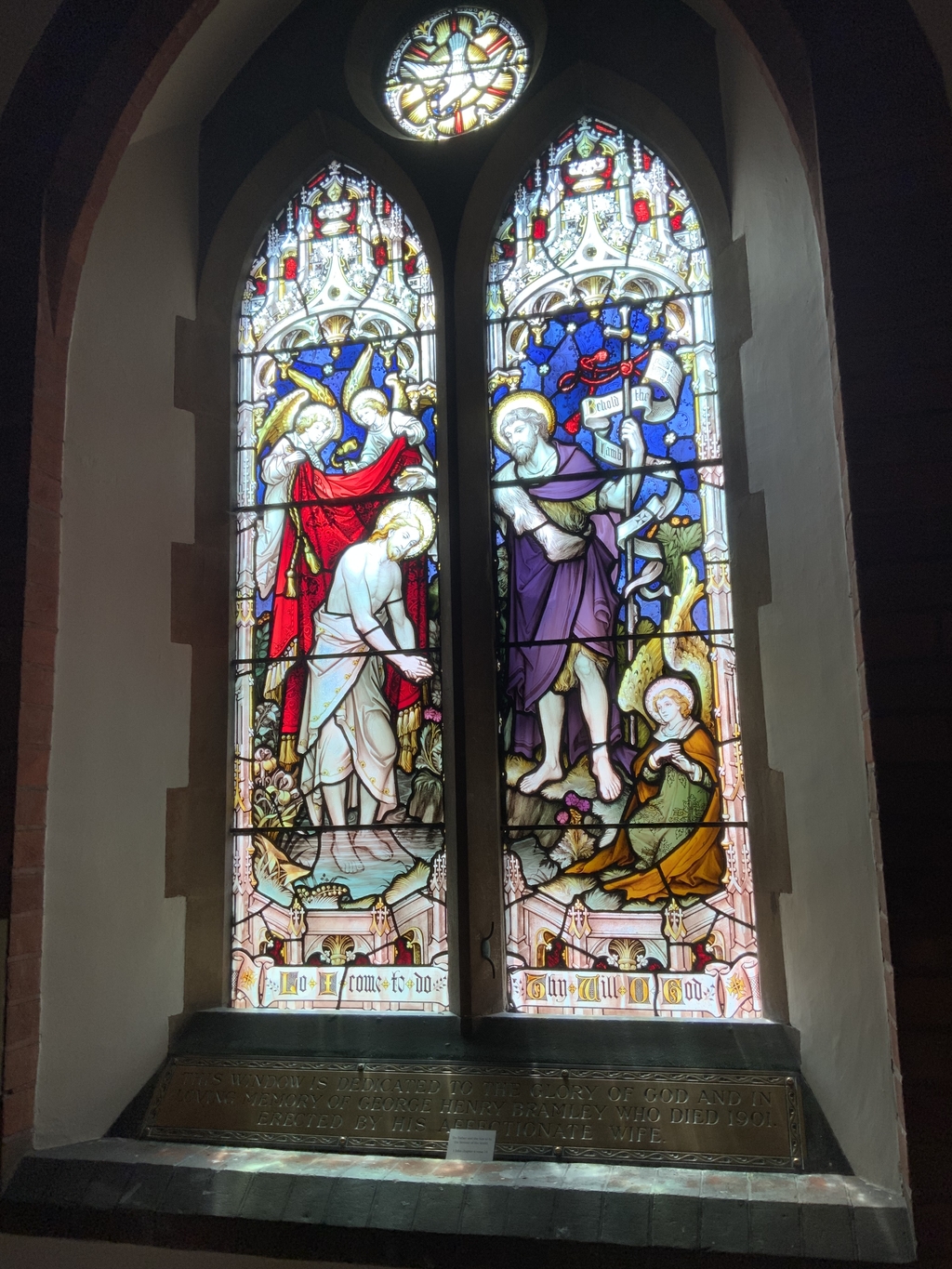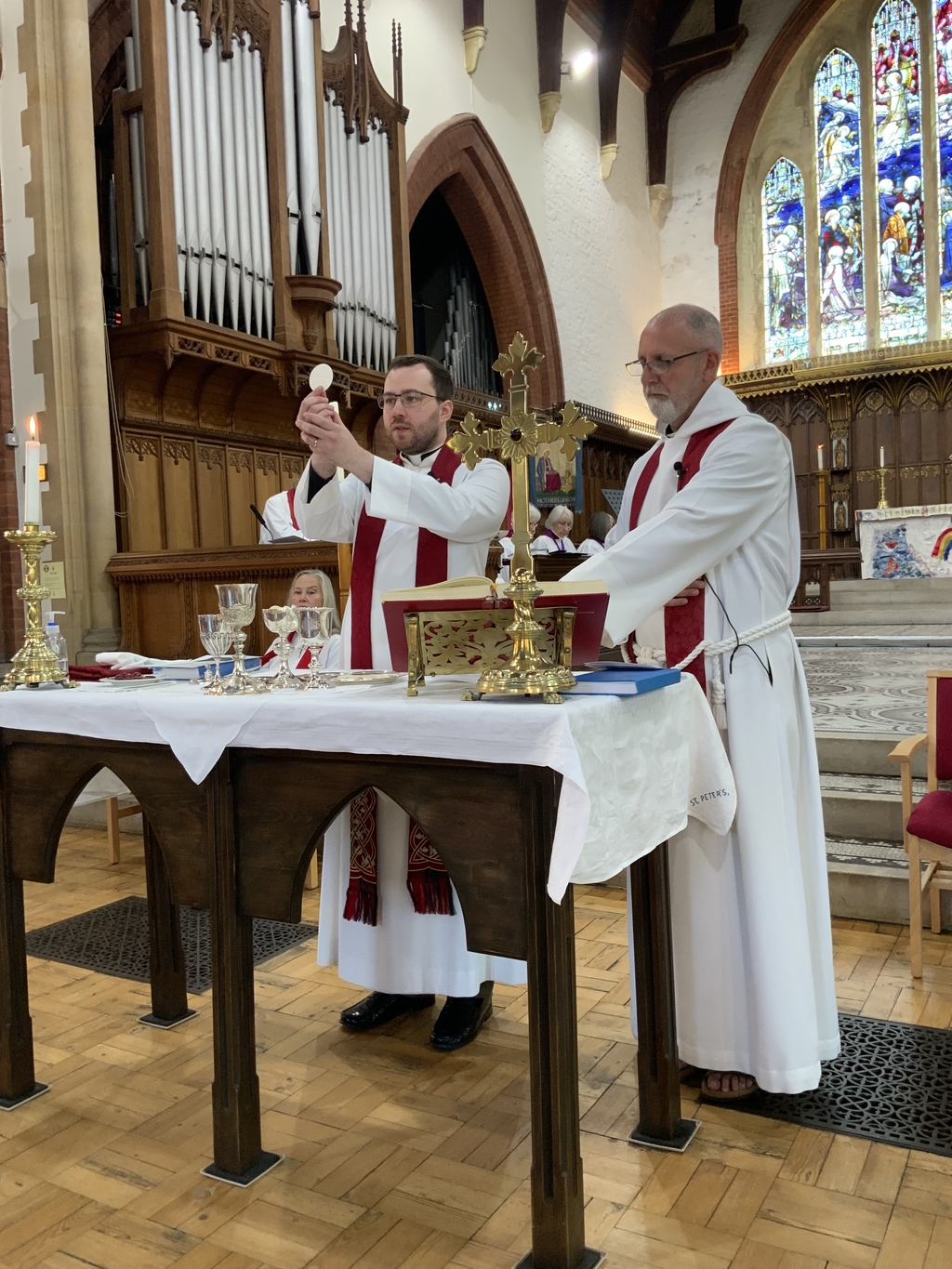Every year on 1st March, Wales celebrates St David’s Day - but how much do you actually know about Wales’ patron saint? When I say ‘Wales’ I should say ‘Cymru’. Wales being the name given by the Anglo-Saxons referring to ‘foreigners’ or ‘strangers’, even though the Welsh were the original Britons.
Many sources proclaim David as the greatest figure in the Welsh Age of Saints. A faithful Christian, he founded many religious communities and gives his name to the smallest city in the United Kingdom.
Much of what we actually ‘know’ about David is based on writings in Latin by Rhygyfarch, a monk, scholar and son of the Bishop of St David’s, written some 500 years after David lived.
Even the image of St David has changed over the centuries. From images in stained glass windows portraying a powerful Archbishop we have moved in the last 100 years to a more honest and realistic depiction of a man who was a hermit, a scholarly, humble and down-to-earth figure who was respected for being one of the people.
So, meek or mighty, the BBC journalist Matt Lloyd has recently gathered 10 ‘facts’ for us to ponder and contemplate:
1) David’s birthday is a mystery. An angel foretold his birth to Saint Patrick, 30 years before it happened. His exact birthdate is thought to be somewhere between 462 and 515 AD. Some say he lived over 100 years and died on 1st March 589, hence St David’s Day.
2) He was born in a storm. Legend says that David’s mother, Non, gave birth to him on a Cliff-top in Pembrokeshire during a fierce storm. At the exact moment of his birth, a bolt of lightning from heaven is said to have struck the rock, splitting it in two. A nearby holy well is said to have healing powers.
3) He had royal heritage. David’s official biography, written by Rhygyfarch, claims his father was Sant, the Prince of Powys, and his grandfather was King Ceredig, who founded Ceredigion. His mother, Non, was a Nun and possibly raped. She was later canonised (made a saint).
4) Importantly, he’s not called David. Non named him Dewidd, or Dewi to the locals.
5) He took centre stage at Glastonbury, centuries before the great music festival. He was educated at a monastery and became a missionary, spreading the message of Christianity. Dewi was a renowned preacher, founding monastic settlements and churches in Cymru, Brittany and south-west England. He visited Glastonbury to rededicate the abbey and he donated a travelling altar that included a great sapphire.
6) Dewi left his mark. Like most seaside tourists, Dewi reputedly brought back a rock, though not a stripped boiled sugar stick, from his pilgrimage to Jerusalem. That stone now sits in an altar at St David’s Cathedral, built upon the site of his original monastery.
7) Dewi was a teetotal vegetarian. Strict dieters and healthy eaters have nothing on Dewi. He and his monks led a very simple and austere life, living off only bread, herbs, leeks and water. His only drink was water and this led him to being called ‘Aquaticus’ - the original Aqua Man!
Dewi even refused to allow his monks to use oxen to plough their fields, telling them to do it by hand. They all pulled the ploughs themselves. Good Commando stock!
Dewi’s commitment to his holy orders included practising penance by standing up to his neck in a lake of freezing cold water reciting scripture.
8) Miraculous Stories are associated with Dewi - He is said to have cured his tutor of blindness with the sign of the cross and brought a dead boy back to life by splashing the child’s face with tears. It is also said that the ground beneath his feet rose up to form a hill so people at the back of a large crowd in Llanddewi Brefi could hear him speak. He levitated and the ground rose to meet him. Then a white dove, sent by God, settled on his shoulder and the dove has ever since been a symbol of Dewi’s ministry.
9) Dewi was a celebrity of the Middle Ages. He has been the patron saint of Wales since the 12th century, at a time when there were more than 60 churches in Wales dedicated to him. Dewi’s shrine was so revered that Pope Callistus II said two pilgrimages to St David’s were worth one to Rome and three pilgrimages to St David’s were worth one holy journey to Jerusalem.
St David’s relics, including his remains and burial artefacts, were originally kept in a portable casket on the stone base of his shrine at St David’s Cathedral. In the 13th century, the Vikings attacked and precious metals were stripped from the shrine. After a new shrine was constructed, King Edward I came to pray at Dewi’s shrine in 1284. Sadly, during the Protestant Reformation centuries, Dewi’s relics were taken away and never reappeared, but in similar times Shakespeare immortalised Dewi’s emblem of the leek in Henry V Act V Scene 1 as King Henry says he’ll wear the leek on St David’s Day, ‘for I am Welsh’ he proclaims.
10) Finally, the tenth and perhaps most important fact - St David’s legacy lives on…
His last words to his followers came from a sermon he preached on the previous Sunday before he died: ‘Be joyful, keep the faith, and do the little things that you have heard and seen me do.’ The phrase ‘Gwnewch y pethau bychain’ - ‘Do the little things’ - is still quoted regularly in Wales today. In fact, I heard somebody say it in the street when my family went back to the ‘Holy Land’ last week!
St David’s simple and concise motto, to assist Christ’s followers in their daily lives, simply suggests that people focus not on the big picture but on small things, to make life better for them and those around them.
This St David’s Day, hold that teaching close, change your own lives and change the lives of those whom you seek to serve in God’s name and by doing so, really get to know the patron saint of Cymru, Dewi Sant.
Pob bendith / Every blessing,
Christian













